
Consumer Insights
Uncover trends and behaviors shaping consumer choices today
Procurement Insights
Optimize your sourcing strategy with key market data
Industry Stats
Stay ahead with the latest trends and market analysis.
The Expert Market Research report, titled “Pre-Marinated Fish Fillets Manufacturing Plant Project Report 2025 Edition: Industry Trends, Capital Investment, Price Trends, Manufacturing Process, Raw Materials Requirement, Plant Setup, Operating Cost, and Revenue Statistics” includes various aspects that are critical for establishing a pre-marinated fish fillets plant. These include infrastructure requirements, transportation requirements, utility specifications, and financial and economic analysis, among others.






The increasing demand for pre-marinated fish fillets can be attributed to the convenience it provides. These products save time in meal preparation, appealing to busy consumers seeking quick and nutritious meals. Pre-marinated salmon fillets are popular among health-conscious consumers for their rich omega-3 content, while marinated tilapia is favoured for its mild flavour and versatility in various cuisines. In terms of protein content, fish like tuna can provide up to 30.7 g of protein per 100 g, making it an excellent source of lean protein. Moreover, a serving of marinated fish typically contains around 17.22 g of protein per 100 g, contributing significantly to daily protein intake. The rise of meal kit services and ready-to-cook meals has further fuelled the demand for pre-marinated fish fillets, as these options cater to the growing trend of home cooking and the desire for restaurant-quality meals at home.
Other elements to consider while establishing a pre-marinated fish fillets plant include raw material sourcing, workforce planning, and packaging. The production of pre-marinated fish fillets relies on fresh fish fillets, which are the primary raw material used in this process. Common fish choices include golden sea bream (Sparus aurata) and anchovies (Engraulis encrasicolus). Acids such as vinegar and citrus juices are commonly used as they help denature proteins, allowing for better flavour absorption. Salt is another critical component, typically added in concentrations ranging from 10% to 20%. Additionally, sugars like brown sugar or white sugar are included to balance flavours. Various spices and herbs, including garlic, black pepper, and paprika are also added. Preservatives like sodium nitrite is sometimes used to maintain product quality.
Moreover, to help stakeholders determine the economics of a pre-marinated fish fillets plant, project funding, capital investments, and operating expenses are analyzed. Projections for income and expenditure, along with a detailed breakdown of fixed and variable costs, direct and indirect expenses, and profit and loss analysis, enable stakeholders to comprehend the financial health and sustainability of a business. These projections serve as a strategic tool for evaluating future profitability, assessing cash flow needs, and identifying potential financial risks.
Pre-marinated fish fillets are fish portions that have been infused with a marinade prior to packaging, enhancing their flavour and making them convenient for cooking. This practice has roots in ancient culinary traditions where fish was preserved and flavoured through various methods, such as salting and pickling. Over time, the technique evolved, and marinating has now become a popular way to prepare fish for quick and easy meals.
Pre-marinated fish fillets are tender and moist due to the marination process, which enhances their texture and flavour. The marinating process also improves the visual appeal, as the fillets often take on a rich colour from the marinade. Chemically, the marinade typically contains acids (such as vinegar or citrus juice) that denature proteins, enhancing flavour absorption and tenderness. Moreover, the presence of salt helps retain moisture, while herbs and spices contribute antioxidant properties, improving the overall nutritional profile of the fillets.
The production process of pre-marinated fish fillets begins with fresh fish fillets, which undergo preparation that includes cleaning and cutting to ensure quality. Next, the fillets are subjected to marination, where they are soaked in a flavourful marinade that enhances taste and tenderness. After marination, the fillets are packaged in sealed bags to maintain freshness and prevent contamination. The packaged pre-marinated fish fillets are then stored under appropriate conditions, either refrigerated or frozen, to preserve quality until they are ready for distribution to retailers.

Read more about this report - REQUEST FREE SAMPLE COPY IN PDF
The market for pre-marinated fish fillets is driven by the increasing demand for convenient meal solutions and the growing trend of healthy eating. Consumers are looking for quick-to-prepare options that do not compromise on flavour or nutrition, leading to a rise in sales of these products in supermarkets and restaurants. For example, pre-marinated salmon fillets are popular among health-conscious consumers for their rich omega-3 content, while marinated tilapia is favoured for its mild flavour and versatility in various cuisines. Additionally, the rise of meal kit services and ready-to-cook meals has further fuelled the demand for pre-marinated fish fillets.
A detailed overview of production cost analysis that evaluates the manufacturing process of pre-marinated fish fillets is crucial for stakeholders considering entry into this sector. Furthermore, stakeholders can make informed decisions based on the latest economic data, technological innovations, production process, requirements of raw materials, utility and operating costs, capital investments by major players, pricing strategies, and profit margins. For instance, seafood consumption varies significantly across countries. In 2024, China remains the largest consumer of fish, with approximately 57,474 tons consumed annually, which is more than four times greater than Indonesia's 12,154 tons and India's 11,016 tons. The United States follows with about 7,544 tons, while Japan rounds out the top five with 5,842 tons. In terms of per capita consumption, Iceland leads globally with an impressive 90.59 kg per person per year, followed closely by the Maldives at 83.09 kg. Other notable countries include Kiribati and Macau, each consuming around 73 kg per person. This rising seafood consumption is expected to provide various opportunities for players in pre-marinated fish fillets market.
Below are the sections that further detail the comprehensive scope of the prefeasibility report for a pre-marinated fish fillets production plant:
Market Dynamics and Trends: The rise of online grocery shopping is significantly reshaping market conditions in the pre-marinated fish fillets sector. With the increasing preference for online purchases, consumers can easily browse a wide variety of pre-marinated fish fillet options from the comfort of their homes. Major platforms such as Instacart, Amazon Fresh, Walmart Grocery, and Thrive Market offer extensive selections of pre-marinated fish products, allowing customers to shop from multiple retailers in one order. Understanding these factors helps businesses align their production and supply plans with demands and trends in the pre-marinated fish fillets market.
Profiling of Key Industry Players: Leading manufacturers in the pre-marinated fish fillets market include key players such as High Liner Foods (Canada), Leroy Seafood Group (Norway), Thai Union Group (Thailand), Mowi ASA (Norway), and Cooke Aquaculture (Canada). Other notable companies are Bakkafrost (Faroe Islands), Grieg Seafood (Norway), Nueva Pescanova (Spain), Ocean Quality (Norway), Slade Gorton (USA), Icelandic Group (Iceland), Young's Seafood (UK), and Nomad Foods (UK). In March 2024, Leroy Seafood Group partnered with Nueva Pescanova to broaden their offerings in the pre-marinated segment. Similarly, Thai Union Group acquired a majority stake in Rubicon Resources, a supplier for Red Lobster in 2020, further solidifying its position in the seafood market.
In March 2024, Cooke Aquaculture Chile launched the country's first certified 100% organic salmon. This facility will produce 3,700 tons of organic salmon, representing 25% of Cooke Chile's total output. The project aims to capture 10% of the global organic Atlantic salmon market by 2025. These strategic moves highlight the competitive landscape and ongoing innovation within the pre-marinated fish fillets sector.
Economic Analysis: Capital expenditure (CAPEX) analysis provides stakeholders the knowledge about required investments in advanced technologies, efficient machinery, and necessary infrastructure. Investing in high-capacity mixing equipment, such as a continuous mixer or high-shear mixer, can improve production efficiency by 20-30%. Investing in energy-efficient systems, such as combined heat and power (CHP) systems could reduce energy consumption by up to 30%, as these systems use waste heat from production processes to generate electricity and provide heating.
Fluctuations in the prices of pre-marinated fish fillets can be attributed to seasonal availability of fishes. Salmon is typically more abundant during the summer months, leading to lower prices during this season. Conversely, during the winter, when salmon is less available, prices can rise sharply due to scarcity. Overfishing is another critical concern affecting supply. For example, if a particular fish species, like cod, faces overfishing, it can lead to reduced stocks and increased prices as the supply diminishes. The competition from alternatives is also an important market dynamic. With the growing popularity of plant-based proteins like tofu and tempeh, consumers have more diverse dietary options. This competition can drive down prices for pre-marinated fish fillets.
Establishing a pre-marinated fish fillets manufacturing facility requires a comprehensive financial investment that encompasses various elements critical to the project's success. The following sections detail these components:
Projected profit margins and effective product pricing strategies improve overall profitability. Manufacturers might target a profit margin of around 20-30%, achieved through strategic pricing based on raw material costs and prevailing market demand. Effective pricing strategies should consider fluctuations in raw material prices and competitive positioning within the market.
Establishing a pre-marinated fish fillets manufacturing facility requires compliance with the Fish Packing and Processing Regulations, which mandate proper chilling and hygiene during processing. Guidelines from the Food Safety and Standards Authority of India (FSSAI) cover handling, processing, and packaging standards. Adhering to packaging regulations ensure that materials do not alter the fish's characteristics or introduce harmful substances. Compliance is essential for successful operations and enhancing consumer trust.
This prefeasibility report aims to equip potential investors and existing manufacturers with crucial insights to make informed decisions in the pre-marinated fish fillets industry.
*While we strive to always give you current and accurate information, the numbers depicted on the website are indicative and may differ from the actual numbers in the main report. At Expert Market Research, we aim to bring you the latest insights and trends in the market. Using our analyses and forecasts, stakeholders can understand the market dynamics, navigate challenges, and capitalize on opportunities to make data-driven strategic decisions.*
Get in touch with us for a customized solution tailored to your unique requirements and save upto 35%!
Basic Plan
USD 2,699
USD 2,429
Get Startedtax inclusive*
Raw Material and Product Specification, Raw material consumption, Process flow diagram
Machinery Cost, Working Capital
Utilities consumption, Operating cost, Overheads, Financing Charges, GSA , Packaging
Premium Plan
USD 3,699
USD 3,329
Get Startedtax inclusive*
Key Processing Information, Capital Investment Analysis, Conversion Cost Analysis
Raw material consumption and prices, Utilities consumption breakdown, By-Product Credit, Labour Charges Breakdown
Land and Site Cost, Equipment Cost, Auxiliary Equipment Cost, Contingency, Engineering and Consulting Charges
Enterprise Plan
USD 4,799
USD 4,079
Get Startedtax inclusive*
Key Processing Information, Capital Investment Analysis, Conversion Cost Analysis, Variable Cost Breakdown, Investing Cost Breakdown,
Breakdown of machinery cost by equipment, Auxiliary Equipment Cost, Piping, Electrical, Instrumentation
Cost of Construction, Plant Building, Site Development Charges
Land Cost, Development Charges
Dynamic Spreadsheet (Unlocked)
*Please note that the prices mentioned below are starting prices for each bundle type. Kindly contact our team for further details.*

Basic Plan
USD 2,699
USD 2,429
Key Processing Information
Raw Material and Product Specification, Raw Material Consumption, Process Flow Diagram
Capital Investment Analysis
Machinery Cost, Working Capital
Conversion Cost Analysis
Utilities Consumption, Operating Cost, Overheads, Financing Charges, GSA , Packaging

Premium Plan
USD 3,699
USD 3,329
All Contents of Basic Report
Key Processing Information, Capital Investment Analysis, Conversion Cost Analysis
Variable Cost Breakdown
Raw Material Consumption and Prices, Utilities Consumption, Breakdown By-Product Credit, Labour Charges Breakdown
Investing Cost Breakdown
Land and Site Cost, Equipment Cost, Auxiliary Equipment Cost, Contingency, Engineering and Consulting Charges

Enterprise Plan
USD 4,799
USD 4,079
Includes all Report Content
Key Processing Information, Capital Investment Analysis, Conversion Cost Analysis, Variable Cost Breakdown, Investing Cost Breakdown,
Equipment Cost Breakdown
Breakdown of Machinery Cost By Equipment, Auxiliary Equipment Cost, Piping, Electrical, Instrumentation
Land and Construction Cost Details
Land Cost, Development Charges, Cost of Construction, Plant Building, Site Development Charges
Dynamic Excel Cost Model
Dynamic Spreadsheet (Unlocked)
*Please note that the prices mentioned below are starting prices for each bundle type. Kindly contact our team for further details.*
Flash Bundle
Number of Reports: 3
20%
tax inclusive*
Small Business Bundle
Number of Reports: 5
25%
tax inclusive*
Growth Bundle
Number of Reports: 8
30%
tax inclusive*
Enterprise Bundle
Number of Reports: 10
35%
tax inclusive*
How To Order
Our step-by-step guide will help you select, purchase, and access your reports swiftly, ensuring you get the information that drives your decisions, right when you need it.

Select License Type
Choose the right license for your needs and access rights.

Click on ‘Buy Now’
Add the report to your cart with one click and proceed to register.

Select Mode of Payment
Choose a payment option for a secure checkout. You will be redirected accordingly.
Track prices with detailed trend reports.
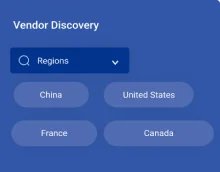
Analyse trade data for supply chain insights.
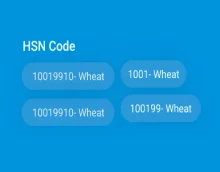
Leverage cost reports for smart savings

Enhance supply chain with partnerships.
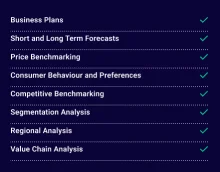
Gain insights to stay ahead and seize opportunities.
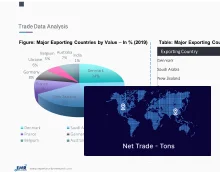
Get insights & trends for a competitive edge.
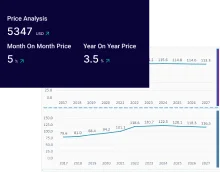
Track prices with detailed trend reports.

Analyse trade data for supply chain insights.

Leverage cost reports for smart savings

Enhance supply chain with partnerships.

Gain insights to stay ahead and seize opportunities.

Get insights & trends for a competitive edge.

Track prices with detailed trend reports.

Analyse trade data for supply chain insights.

Connect For More Information
Our expert team of analysts will offer full support and resolve any queries regarding the report, before and after the purchase.
Our expert team of analysts will offer full support and resolve any queries regarding the report, before and after the purchase.
We employ meticulous research methods, blending advanced analytics and expert insights to deliver accurate, actionable industry intelligence, staying ahead of competitors.
Our skilled analysts offer unparalleled competitive advantage with detailed insights on current and emerging markets, ensuring your strategic edge.
We offer an in-depth yet simplified presentation of industry insights and analysis to meet your specific requirements effectively.



Australia
63 Fiona Drive, Tamworth, NSW
+61-448-061-727
India
C130 Sector 2 Noida, Uttar Pradesh 201301
+91-723-689-1189
Philippines
40th Floor, PBCom Tower, 6795 Ayala Avenue Cor V.A Rufino St. Makati City,1226.
+63-287-899-028, +63-967-048-3306
United Kingdom
6 Gardner Place, Becketts Close, Feltham TW14 0BX, Greater London
+44-753-713-2163
United States
30 North Gould Street, Sheridan, WY 82801
+1-415-325-5166
Vietnam
193/26/4 St.no.6, Ward Binh Hung Hoa, Binh Tan District, Ho Chi Minh City
+84-865-399-124
United States (Head Office)
30 North Gould Street, Sheridan, WY 82801
+1-415-325-5166
Australia
63 Fiona Drive, Tamworth, NSW
+61-448-061-727
India
C130 Sector 2 Noida, Uttar Pradesh 201301
+91-723-689-1189
Philippines
40th Floor, PBCom Tower, 6795 Ayala Avenue Cor V.A Rufino St. Makati City, 1226.
+63-287-899-028, +63-967-048-3306
United Kingdom
6 Gardner Place, Becketts Close, Feltham TW14 0BX, Greater London
+44-753-713-2163
Vietnam
193/26/4 St.no.6, Ward Binh Hung Hoa, Binh Tan District, Ho Chi Minh City
+84-865-399-124
Share